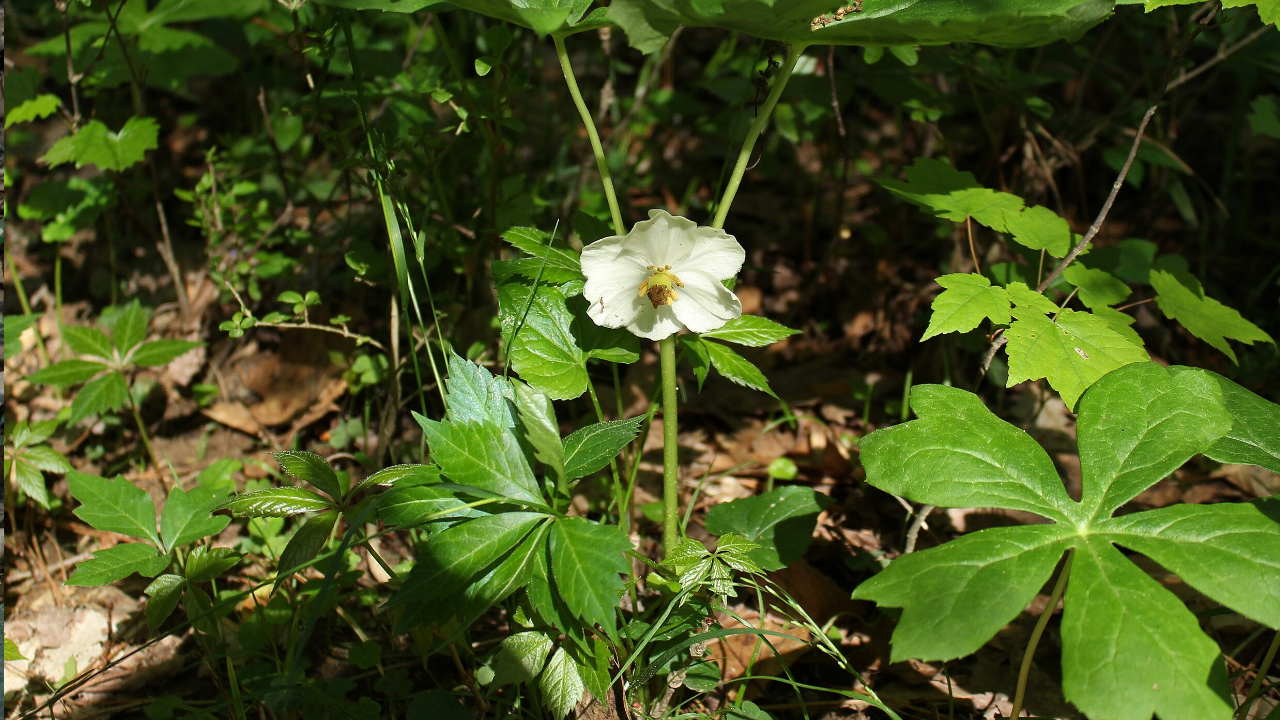Plant Description
Mayapple (Podophyllum peltatum), also known as American Mandrake, is a perennial herb native to New Jersey’s deciduous forests. Growing to 1 to 1.5 feet tall, it features large, umbrella-like leaves that unfurl as the stem elongates. In May, a single, nodding white flower blooms in the axil between the plant’s two leaves, eventually developing into a fleshy, lemon-shaped berry. The fruit ripens to a golden-yellow hue by late summer and is the only edible part of the plant; all other parts, including unripe fruits, leaves, roots, and seeds, are toxic if consumed in large quantities (Jersey-Friendly Yards).
Mayapple spreads through rhizomes, forming dense colonies in shady, damp woodlands. Its name reflects both the timing of its bloom and the apple-like appearance of its fruit. Historically, Native Americans used the roots for their medicinal properties, particularly as a cathartic agent. While the ripe fruit can be used in jellies, proper identification and ripeness are essential to avoid toxicity (Eat the Weeds).











